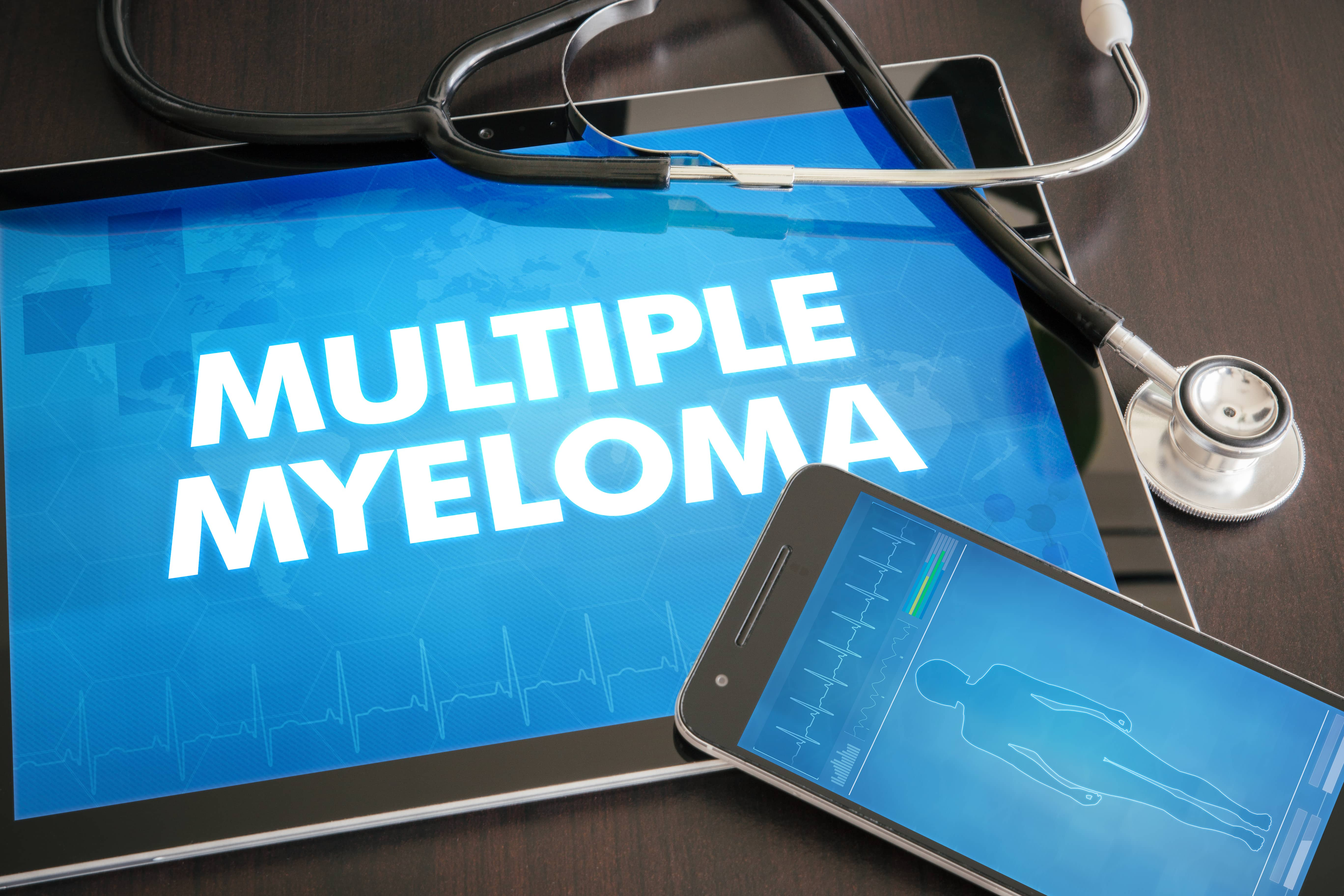- Center on Health Equity & Access
- Clinical
- Health Care Cost
- Health Care Delivery
- Insurance
- Policy
- Technology
- Value-Based Care
Intensive Therapy More Effective vs Less Intense Therapy in Frail Patients With MM
A recent study suggests that more intensive triplet therapy is more effective than less intensive doublet therapy in frail patients with newly diagnosed multiple myeloma (MM), and that more intensive treatment may even improve frailty itself.
In a real-world cohort of patients with newly diagnosed multiple myeloma treated in the Veterans Affairs (VA) health system, more intensive therapy with bortezomib-lenalidomide-dexamethasone (VRd) was not only more effective than less intensive doublet therapy with lenalidomide-dexamethasone (Rd) in frail patients but appeared most beneficial to patients with the highest levels of frailty.
While randomized controlled trials (RCTs) tend to exclude frail patients with multiple myeloma, creating uncertainty around optimal treatment of this population in the real-world setting, the retrospective cohort study, which was published in Blood Advances, challenges this trend.
Multiple myeloma | Image credit: ibreakstock - stock.adobe.com

“Although analyses from RCTs and observational studies consistently show that frailty is associated with higher risks of treatment toxicity, treatment discontinuation, and mortality, this evidence does little to inform the key clinical question: whether to give frail patients in practice the same intensity of treatments evaluated in the younger, fitter patients in RCTs,” the authors wrote.
The study aimed to determine the differences in survival between US veterans treated with VRd compared with Rd for newly diagnosed multiple myeloma, as well as survival benefits and toxicity in patients who had high levels of frailty.
The primary outcome was overall survival (OS) based on vital status information in the VA Corporate Data Warehouse (CDW), and the secondary outcome was unplanned hospitalizations within the VA Healthcare System with a duration of stay of at least 1 day. Data from the national VA Cancer Registry were also used.
A total of 2573 veterans diagnosed with multiple myeloma and treated with VRd (n = 990) or Rd (n = 1583) at VA medical centers from 2004 to 2020 were included in the study. The median age was 69.7 (IQR, 74.2-75.8) years, and patients who were nonfrail were younger (median age, 67.6 years) compared with moderate-severely frail patients (median age, 71.1 years). Stage III multiple myeloma was also more common among patients who were frail (19.5% vs 32.9%).
In an analysis of the combined overall population, patients treated with VRd had longer overall survival (OS) compared with those given Rd ((log-rank P = .007). Lower mortality was also seen among those treated with VRd vs Rd (HR, 0.81; 95% CI, 0.70-0.94). At a median follow-up of 3.1 years, 1213 patients had died during the study period overall.
Contrary to the authors’ expectations, analyzing the matched frailty categories separately demonstrated a stronger association between VRd vs Rd and lower mortality in patients who were moderately or severely frail (HR, 0.74; 95% CI, 0.56-0.97) and a lesser association among patients who were mildly frail (HR, 0.80; 95% CI, 0.61-1.05) or nonfrail (HR, 0.86; 95% CI, 0.67-1.10).
The most substantial benefit associated with receiving VRd vs Rd was among patients who were moderately frail and had stage III disease (HR, 0.57; 95% CI, 0.36-0.90) in an exploratory analysis in which patients were stratified by both frailty level and disease stage.
There were a total of 2440 unplanned hospitalizations during the year following treatment initiation among the overall population, and patients treated with VRd experienced a modestly higher incidence of hospitalization (1.44 hospitalizations per 5 person-years [95% CI, 1.34-1.54]) vs patients given Rd (1.18 hospitalizations per 5 person-years [95% CI, 1.10-1.27]). The incidence rate ratio (IRR) was 1.22 (95% CI, 1.03-1.34).
Looking at the frailty categories individually, VRd was associated with increased hospitalization incidence across groups, but with a lesser association in moderate-severely frail patients (IRR, 1.14; 95% CI, 0.96-1.36) compared with mildly frail (IRR, 1.27; 95% CI, 1.06-1.54) and nonfrail (IRR, 1.24; 95% CI, 1.06-1.46) patients.
While the study was limited by a lack of information on the dose of lenalidomide and bortezomib during treatment or the posttreatment regimens patients received, the results suggest that frail patients can tolerate the more intense triplet regimen and may even benefit most from it, according to the authors. However, additional observational studies are needed to gauge outcomes in this population and take newer therapy regimens into account.
“Our findings not only confirm the net benefit of VRd over Rd in US veterans newly diagnosed with MM but also suggest that this benefit is strongest in patients with the highest levels of frailty, countering historical recommendations to consider doublets in this population,” the authors concluded. “Although there are newer triplet regimens that are preferred in older patients, our findings argue that frailty is not merely a measure of treatment tolerability and a patient who is frail with MM should be considered treatable cause of their frailty, wherein more intensive treatment may be more effective.”
Reference
DuMontier C, La J, Bihn J, et al. More intensive therapy has a better effect for frail parents with multiple myeloma. Blood Adv. 2023;7(20):6275-6284. doi:10.1182/bloodadvances.2023011019
